With the rise in life expectancy over the last 100 years, changes to the way we live have not only become preferred, but also necessary.
Australia’s changing demographic structure has increased interest in multigenerational homes — those that can adapt to a multi-generational family’s evolving needs with ease. While some prefer to build large single structures that accommodate the whole family, others prefer detached dwellings on the same piece of land — usually with a large main house and a smaller secondary granny flat-style abode. This family chose the latter, but with flair.
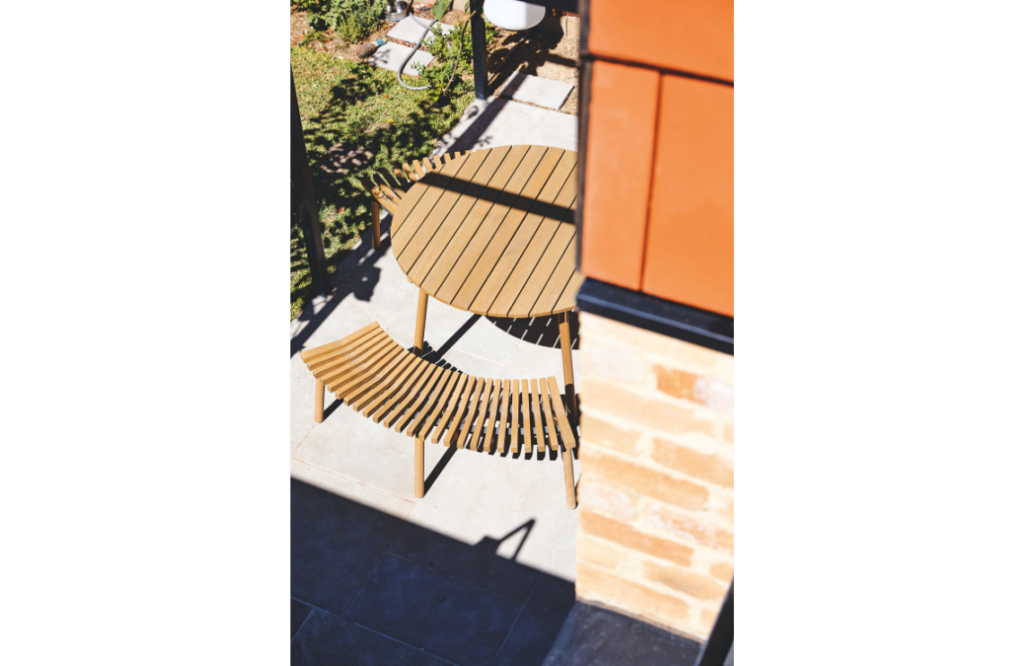
“Terracotta House is no ordinary ‘granny flat’. Architectural, highly detailed and beautiful, it is multi-generational living but acting in reverse,” explains Mark Austin, a director at Austin Maynard Architects. “While typically a young family will look to accommodate and care for their retired parents, at Terracotta House it is the parent, Belinda, who is helping her son and his wife by allowing them the opportunity to live in a house in a vibrant inner-city Melbourne suburb they would otherwise be unable to afford.”
Belinda purchased the original property while living in her previous home, which only had a small, dark courtyard for an outdoor space. She wanted a tree change, with a farmhouse and a thriving vegetable garden, and yet to be able to stay in the community. When she came across the property on which Terracotta House stands, she knew she had struck gold.
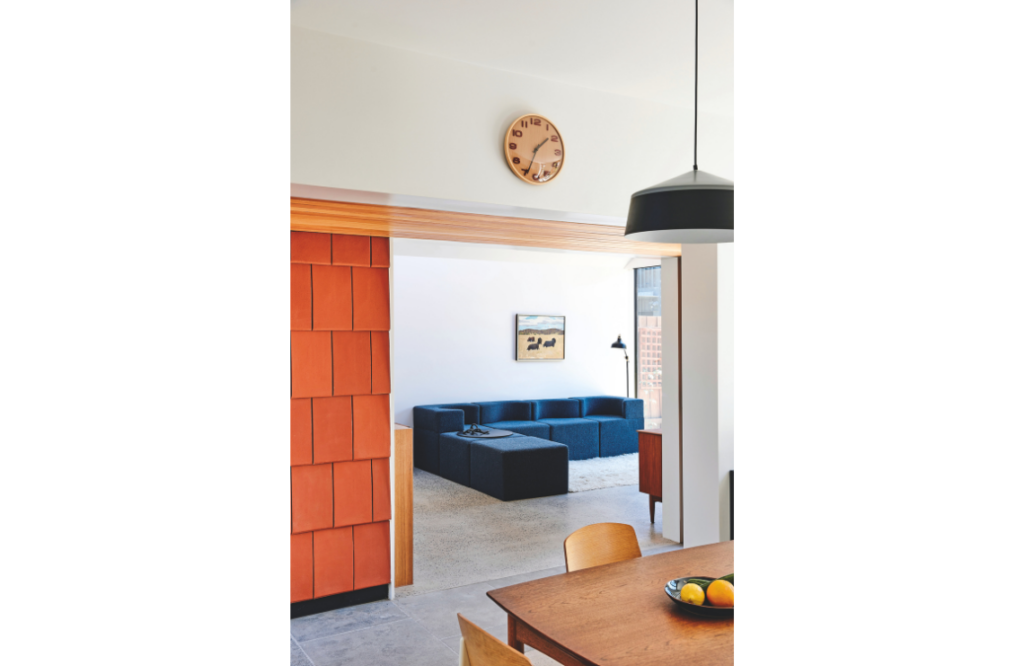
“As an architecture practice, we always aim to maximise space, relate internal spaces to the garden, embrace the street and make the most of laneways. The site that Belinda purchased offered the potential to achieve all of these ideas and more,” Mark shares.
The main house, which was originally a freestanding timber workers cottage with a large back garden, has undergone a thoughtful internal renovation to suit Brenda’s son and daughter-in-law’s living needs while retaining and enhancing the home’s character. Its internal configuration was rearranged during the project. Walls were removed, the living zones were relocated and a new kitchen and bathroom were installed.
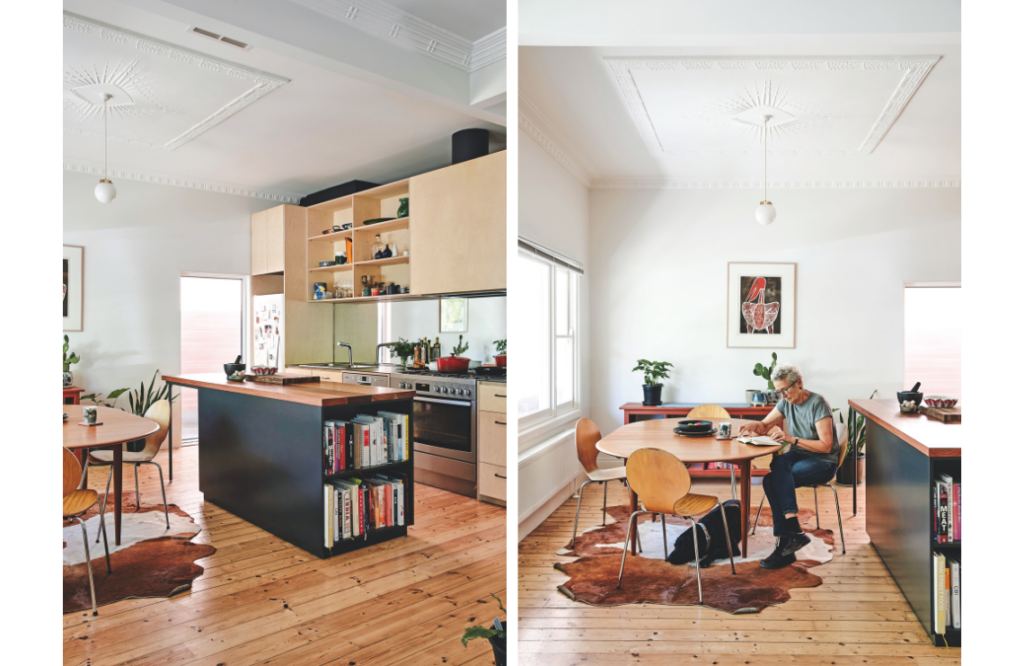
Along the central-western boundary of the property is the shared pavilion, which is mainly used as a library but also functions as a guest room, writer’s studio, music room and general shared social/entertaining space. Facing the shared garden, this light-filled multi-purpose space serves as a village hub of sorts and is cherished by each and every one of the property’s residents. Beyond this pavilion lies what is perhaps one of the most architectural, highly detailed and beautiful so-called “granny flats” many of us will ever come across — Terracotta House.
“The brief to us was clear,” Mark elaborates when describing Belinda’s vision for Terracotta House. “While her kitchen, bathroom and bedroom needed to function well, her priority, the soul of her home, was to be her garden. In responding to this, we kept the scale of her house — Terracotta House itself — small and rational to maximise outdoor space. Belinda’s home spills into the garden, while the recycled brick and terracotta tiling creates a sympathetic background to her flourishing garden.”
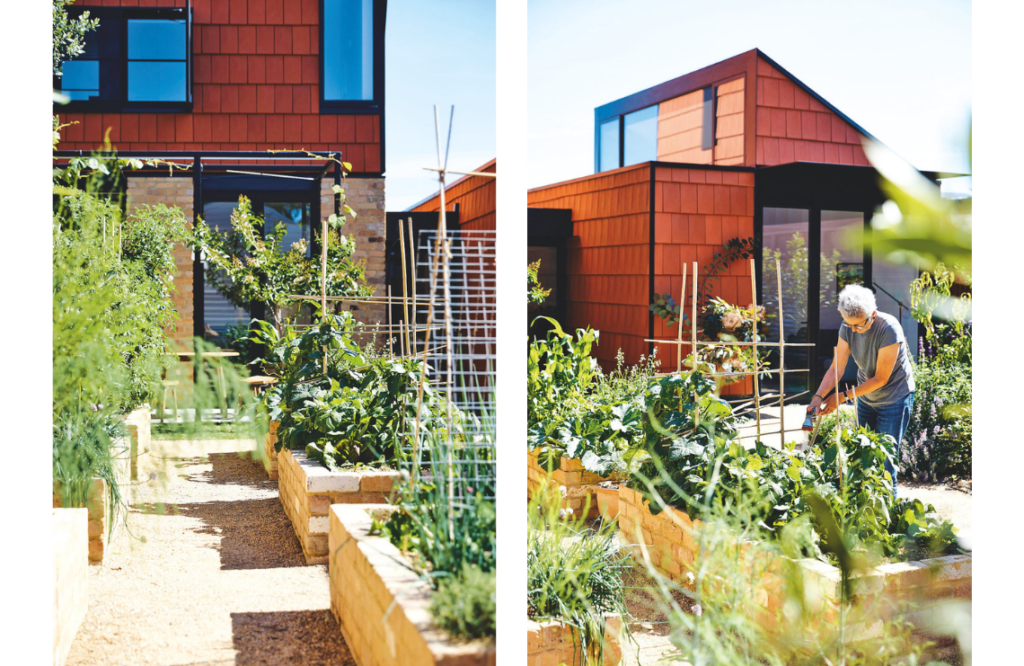
Its beauty undoubtedly stems from the materials it features, the terracotta tiles in particular. The earthy red tiles, which cascade down the abode’s walls, respond to the tone of the light throughout the day. They were chosen as a nod to Belinda’s love for gardening and applied as a wall cladding in an attempt to use this material in an unexpected way. Unsurprisingly, the team had to dedicate a great deal of time and effort to plan and detail this task in order to minimise the number of cuts and ensure the simple, seamless design that eventuated.
The abode comprises a living room, kitchen and dining area, a bathroom and a study/guest room on the ground floor, and a main bedroom and ensuite upstairs. The bedroom upstairs makes the most of the morning sun, as does the eastern-facing skylight with operable louvres, ensuring mornings can be cherished throughout the home.
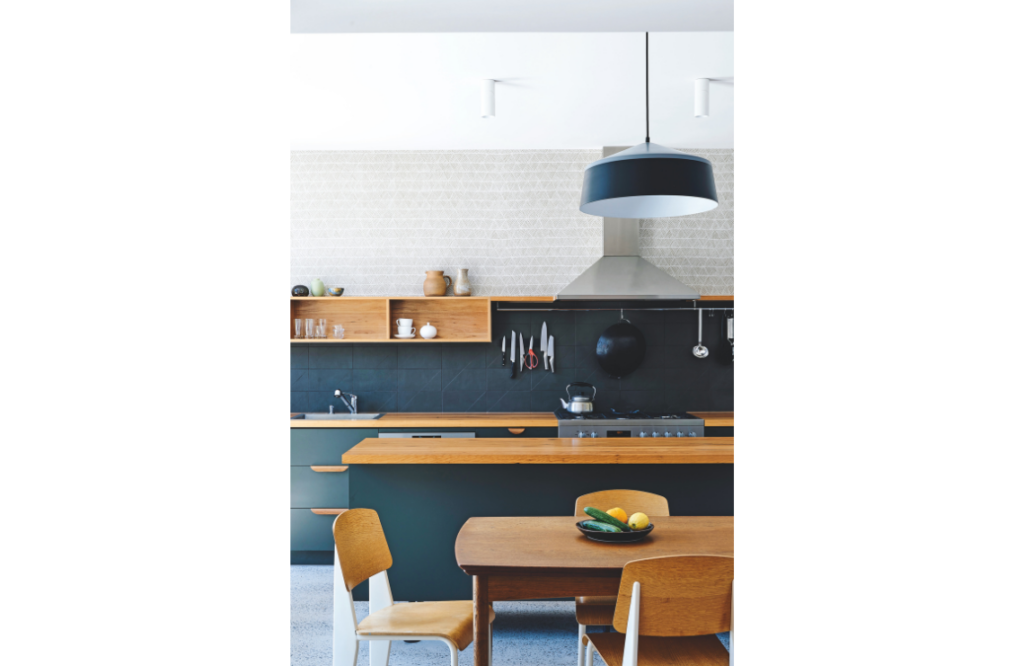
“As with all our projects, sustainability is at the forefront of design with Terracotta House. As well as incorporating a large productive garden and maximising space on this inner-city block, Terracotta House embraces many passive energy design principles,” Mark shares. The home’s design, materials, and window size and placement all enable passive heating and cooling. While the dwelling’s operational windows facilitate cross-flow ventilation during the summer months, the glazing captures the winter sun and keeps out the summer sun.
Full-height windows were integrated wherever possible to make the most of the northern sun, with fixed awnings and screens placed on the northern and eastern windows to protect from harsh weather when necessary, thus reducing the reliance on cooling and heating systems. The highest-available quality insulation was integrated into the internal walls, floors and ceiling, and ceiling fans were installed in the living areas as well. To avoid costly ongoing maintenance, high-quality materials such as brick, concrete, aluminum-framed windows, metal roofing and terracotta tiles were selected to construct a home that will stand the test of time.
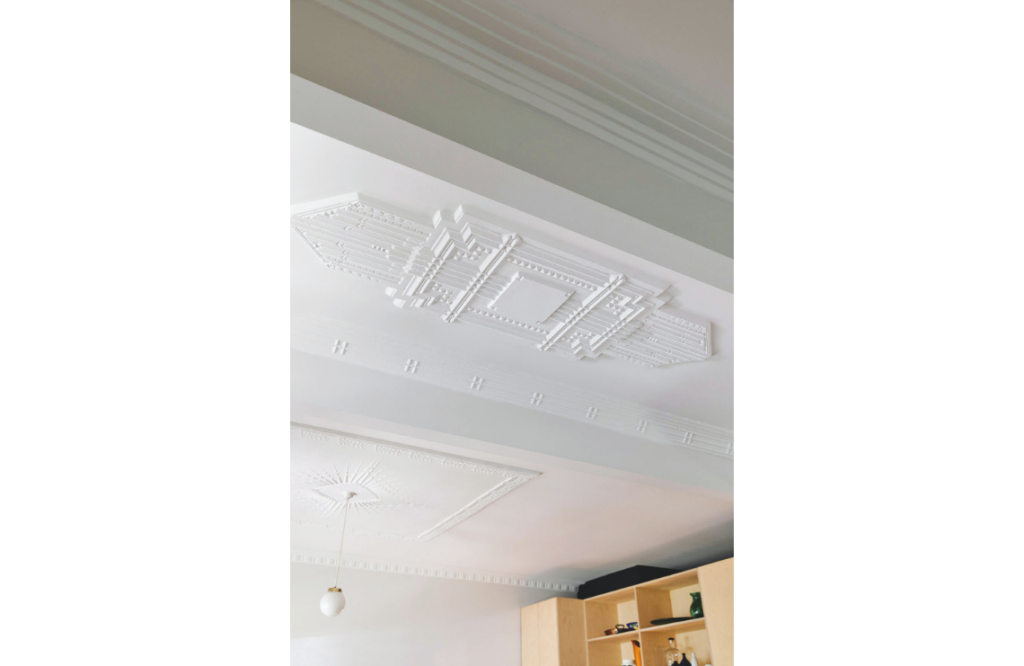
The large productive garden, which forms the centre of this communal home, is exactly what Belinda desired for years. Every endeavour was made to ensure the growing of fruit and vegetables was made easy. Tending to the garden and harvesting is a part of daily life at Terracotta House. “I wanted my home to be beautiful. That mattered. Now I have a beautiful house and the grandchildren love coming here. It’s like a little village for them. We’ve found a new way of achieving communal living,” homeowner Belinda says.


















